The Mighty Susan Katz
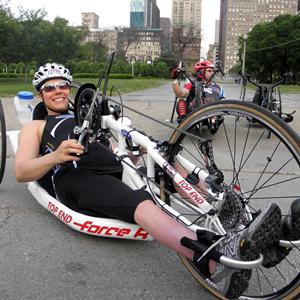
Susan Katz is a very accomplished para athlete. She started off in track and basketball, but later made her way to triathlon and the Big Island. We take a look at her incredible journey.
Slowtwitch: I understand you started off not in triathlon, but in track and basketball – and have some serious hardware to your name. Please walk us through your history and introduction in to sports.
Susan Katz: Oh boy, this is a long story! I first got my start in Paralympic sport at the age of 11 with a community program in the San Francisco Bay Area, where my family was living at the time. I was born with a disability called spina bifida, which is an incomplete formation of the spinal cord at birth. The impact of this is different for every person, and luckily for me, I had very little effect. I was able to walk and just wore a small brace on my left leg, even grew up playing sports like soccer and softball like other kids.
At the age of 10, I had a surgery to relieve some pressure on my spinal cord. I came out of that surgery with incomplete paralysis from the waist down (meaning I still had a little bit of movement in my legs, but I couldn’t walk) and from that point in my life became a full-time wheelchair-user.
Shortly after the surgery, my mom met another mom whose son had spina bifida and played on a local wheelchair basketball team. Our family had never heard of Paralympic sports, and with me always being interested in sports and being an athlete, my mom thought this might be a great activity for me to try.
She took me to a Saturday afternoon wheelchair basketball practice in the spring of 1990 and my life was changed forever. For the first time in my life, I had the opportunity to compete on a level playing field with my peers. The game was fast and exciting and I couldn’t get enough.
It turned out that this was one of the last wheelchair basketball practices of the year and the team was soon transitioning to the track & field season. I quickly became more involved with track & field and put basketball on the back burner during my growing-up years. I had a knack for the throwing events and decided to focus on honing my skills there. I was fortunate to improve enough to be selected to the 1996 U.S. Paralympic Team and competed in Atlanta at the age of 17, just two months after graduating high school.
One week after the Games in Atlanta, I started school at the University of Illinois, a college world-renowned for its wheelchair basketball and wheelchair racing programs for student-athletes. At the time, it was the only university that offered wheelchair athletics for female athletes. I knew I wanted to continue pursuing athletic goals, so the choice of school was easy.
By this point, I’d been so heavily focused on track & field for 7 years and was looking for a little change of pace in my athletic life. I started playing wheelchair basketball with the U of I team that fall and fell back in love with the sport that started it all for me. I was fortunate to be able to play on the varsity wheelchair basketball team for four years and early on had my sights on making the U.S. team for the 2000 Paralympic Games in Sydney, Australia.
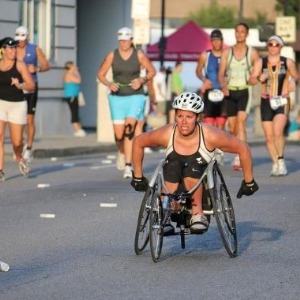
Unfortunately, I was not selected to the team for Sydney. While I was devastated at the time, this turned out to be one of the best things that ever happened to me. I graduated college that same summer, was looking for a job and had been through an incredibly emotional and physically demanding run at making that Paralympic team. I decided to take a break and have some time away from competitive sport. This gave me a chance to get my career started and to realize that I missed basketball and being competitive. It really confirmed that I did still have work left to do in the sport.
I returned to the court in 2002, worked my way back to the national team in 2003 and was named to be on the U.S. Paralympic Team in 2004 for the Games in Athens, Greece. This led to one of the most special experiences of my life, going with my team to the Paralympic Games and winning gold!
After the Games in Athens, I knew my time on the court had come to its natural conclusion. I was ready for new challenges, both personal and professional, and at this point, I took a long break from competitive sport. I stayed active in a variety of sports, including water skiing, swimming and cycling, but really only just for life fitness and to have fun.
ST: When did triathlon enter the picture? Was it love at first sight?
Susan: Triathlon entered the picture in 2008, shortly after I moved to Colorado. I’d randomly met a coach, Lisa Rainsberger, at a work event just two weeks after moving to Colorado for a new job and the timing for me to get back into something competitive was just right. Initially, my only goal was to just get back to a formal training plan – I was craving the discipline and structure – but I didn’t really have a set goal and I wasn’t immediately thinking about triathlon.
The first event we put on the calendar was a 6-day, 300 mile handcycle race across Alaska called the Sadler’s Ultra Challenge. This race is legendary in the disability sport world and 2009 happened to be the 25th anniversary of the race. They planned a special, once-in-a-lifetime route that featured two mountain passes and 16,000 feet of climbing. I’d owned a handcycle for about 10 years and probably put a total of about 100 miles on it in the entire time, so this was going to be a serious commitment on my part. I signed up for that race in August of 2008, having just less than a year to get ready.
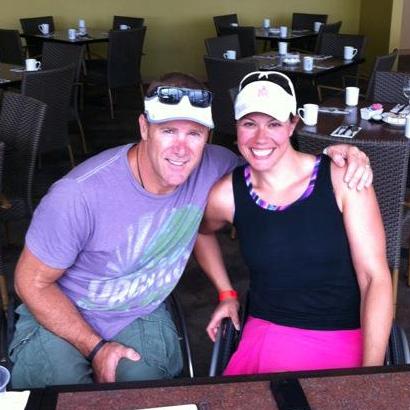
I was really enjoying becoming a cyclist. It was a great new challenge and I was very much reveling in the solitary pursuit after years of being a team sport athlete. Just three months into my training, I was home watching the NBC recap of the Hawaii Ironman from that year. I’d watched the Ironman show for years, even recalling the year John McClean [pictured here with Susan] became the first wheelchair athlete to finish the grueling race. I’ve always been a big dreamer, with my eyes on really big goals. I hadn’t spent my life dreaming of Ironman. But on that day in 2008, when watching the recap show, I caught a glimpse of my good friend (and phenomenal Ironman paratriathlete) Jeff Glasbrenner crossing the finish line in Kona. In that exact moment, I decided Kona would be my next goal.
So, as for triathlon, I’d say it was much more lust at first sight! I was enamored with the bigness of Ironman and the allure of Kona. But, I was also enthralled with the sheer challenge of it all.
ST: You’ve come quite a long way in such a short time. In fact, I hear that someone is even headed to Kona this year. To what do you credit your fast success?
Susan: Ha, that’s funny…I’d call my success in triathlon anything but “fast.” But, I guess from most people’s perspective, it would seem like it’s all happened pretty quickly.
I really did think I was going to go to Buffalo Springs in 2009 (the only race here in the U.S. where handcycle athletes can qualify for Kona), qualify, go to Kona, finish and be done. Things didn’t exactly work out that way.
I went to Lubbock with absolutely no idea what I was doing. This 70.3 was my very first triathlon – yup, never raced any kind of triathlon ever before this, also hadn’t ever swam in open water before! For anyone that’s ever raced Buffalo Springs or has heard anything about it, this isn’t exactly an entry-level kind of course.
The heat is killer, the bike is killer and the run… will kill you. In fact, it nearly did just that my first year. I lucked out in 2009 with the weather; it was unseasonably cool, and rain kept things overcast and drizzly on the bike and I headed out on the run all smiles and feeling great. There are three incredibly tough hills on that run and as I inched my way up each one of them, and closer to the finish line, I began to feel an enormous sense of pride in what I was doing. Not even the qualifying for Kona piece, but that I’d taken on this challenge and was out there completing an Ironman 70.3 triathlon – what a cool thing to do!
However, my inexperience got the best of me. Just three miles from the finish, I was coming down the final hill on the course, got going faster than I should have, lost control of my racing chair and crashed going 32 mph. I ended up finishing the race, bloody knees and broken racing chair and all, but missed the cut-off time by 19 minutes.
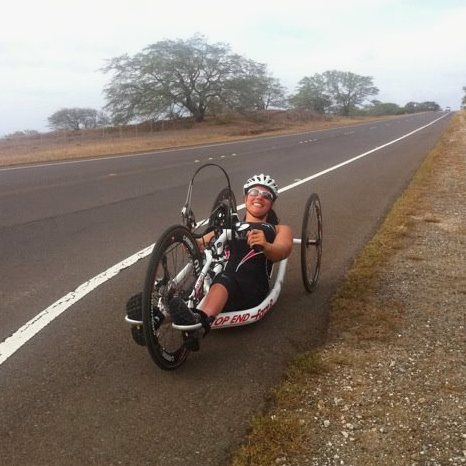
Still, crossing that finish line in Lubbock in 2009 is one of my proudest moments. I have pictures of me in the ambulance post-race, IV in my arm, knees covered in blood, road rash on my arm, finishers medal around my neck, all smiles. I headed to the ER, got 14 stitches in my knees and vowed to be back next year!
However, 2010 turned out not to be my year either, as I bonked on the bike and ended up with a DNF in Lubbock that year. I decided I need a little more experience and also raced the New York City and Chicago Olympic distance races that year. Had some mechanical issues in NYC and started to think maybe triathlon wasn’t going to be my thing after all… I was three races into my career and had had major problems in each and every one of them. Then, I went to Chicago and put together a solid performance, enough to win the women’s paratriathlon division. I ended my season on that note and went back to the drawing board in September 2010 to figure out where to go next in the sport.
I still had Kona on my mind, but decided that I couldn’t have the “what if” of qualifying handing over my head all season long and that I just needed to put an Ironman on my schedule and face the IM challenge head-on. So, I bit the bullet, paid my registration fee and signed up for IM Louisville for 2011.
It’s funny how real Ironman becomes when you drop that $650 on the registration. Ironman is an overwhelming challenge for anyone. But, it’s an even larger-than-life challenge for me when you consider that only one female handcycle athlete has ever made the bike cut-off and finished in Kona; only four other female handcyclists have ever even qualified to compete there; and the one woman to finish was also the only female handcycle athlete ever to finish an Ironman within all the allotted cut-off times – until 2011.
Despite having Louisville on the schedule for August, I went to Lubbock for the third time with the intent of qualifying for Kona. This would mean two full IMs just 6 weeks apart, but I figured I would cross that bridge when I got there.
I was finally able to put the pieces together at Buffalo Springs last year – having a strong race in the 112 degree heat, finishing in 7:49 and claiming my spot to race in Hawaii. We chose to go ahead and race in Louisville – I felt I needed the experience before getting to Kona. That day in Louisville will stay with me for a lifetime. Crossing the Ironman finish line is one of the most rewarding and amazing feelings I’ve ever felt, easily rivaling what it feels like to sit atop the podium at the Paralympic Games with a gold medal. I finished in 13:59, making all the official race cut-offs, just the second female handcyclist to become an official Ironman finisher.
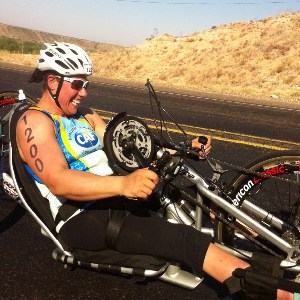
I went on to Kona six weeks later with much less stellar results, having to stop at mile 70 of the bike. What happened on race day is a whole other article in itself, but I value the experience I gained by being on the course there last year. I learned so many important things that day and while it was one of the most difficult days I’ve ever experienced, I know it was an important part of my journey. I’ve become a better triathlete and a stronger person from that race, and just like getting cut from the 2000 Paralympic Team, I think my DNF in Kona last year is part of my story, not the end of my story.
I felt more motivated than ever after leaving Hawaii last October. I got back to training a couple months later and returned to Lubbock in June for the fourth time. It was a cool 102 on race day this year and the “mild” conditions made for “fast” racing. I rocked a 14 minute PR and will be headed back to Kona this October.
These successes are certainly not mine alone. First and foremost, I am beyond fortunate to have the most amazing and supportive family in the world. When I was unloaded from the medical van in Kona last year, my mom was the first person I saw and she looked and me and said, “It’s okay, we’ll just be back next year.” Without their support and belief in me, not just in triathlon, but in all I do, I wouldn’t have the idea that these are challenges I could take on.
In addition to my family, I wouldn’t have even gotten to my first start line in triathlon without the support of Challenged Athletes Foundation. CAF has supported me with racing equipment and travel grants that literally allow me to get to the start line to race. But, they also provide me with role models who have led the way and shown me that crazy things like finishing an Ironman are even possible. Without CAF, I wouldn’t be out there chasing my dreams.
I’ve also been blessed with incredible coaches who have never treated me differently than any of their other athletes. Honestly, if I'd sat down at that table in December 2008, said I wanted to take on Ironman and had Lisa Rainsberger do anything but look back at me and say, “Okay, you can do it. Let’s train for an Ironman,” I don’t think I ever would have believed I could it myself. Living in Colorado Springs, I was also very lucky to live just a mile down the road from the Carmichael Training Systems Endurance Sports Club. I began training at the ESC in 2010 and access to high-level bike training was a huge part of my success in reaching the Ironman finish line in 2011. The folks at CTS have become some of my biggest supporters, believing in my enough to take me on as a CTS athlete for 2012 and under the guidance of Coach Rebecca Kurtz, I continue to make strides in this sport with eyes fully on the Kona finish line.
ST: Biggest three pieces of advice to a beginning triathlete?
Susan: 1. Embrace the journey – it’s not just about getting faster and crossing the finish line.
2. Be proud of yourself every time you step to the start line – triathlons are hard, it takes a lot of guts to toe the line and being proud of yourself every time you do that is going to make the entire experience that much more rewarding.
3. Smile and say thank you while you’re out on the race course. Even when you’re suffering and miserable, put a smile on your face and you’ll be amazed at how much better it can make you feel – even if just for a moment.
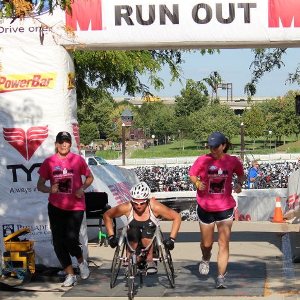
ST: And here’s the big hitter… Why do you do it? What gets you out there to put the work in, keep learning, changing, failing, and succeeding? What makes Susan Katz tick?
Susan: Whoa…big hitter, indeed.
I’ve said before that the feeling of crossing the finish line is what keeps me going back to the start line, and that is a big part. Finish lines are the best feeling in the world. But, I’m very motivated by the journey – the experience as a whole. I thrive on the structure and the discipline of training; setting goals and seeing the hard work pay off in successes throughout the season.
I was going through some struggles earlier this season, not feeling motivated and questioning my commitment to do what it takes to be an Ironman, and Rebecca said to me that I could be someone who just lived my life like everybody else, but that I really want to be someone who does extraordinary things. That really hit home. I enjoy the trials and tribulations – having to endure the failures to get to the successes and knowing that if it all came easily, it wouldn’t mean as much in the end.
Finally, I’d say I do these things because I can. It sounds simple and a little cheesy, but people don’t look at me and think “triathlete.” And yet, here I am, triathlete, gold medalist and Ironman. Simply because I believe I can, so I do.
ST: Who are some of your sponsors and supporters?
Susan: Again, my family – they’re amazing. In fact, my mom and brother-in-law were my handlers on race day in Kona last year. My BIL makes a return this year, along with my incredible friend Nicole Ward who travels all over the country to support me at races and act as my handler on race day. I couldn’t do this without them.
Challenged Athletes Foundation – I had no idea where to begin when I first decided to chase the dream of racing in Kona and CAF is the first place I turned. They’ve been there every step of the way with me and without their support I absolutely couldn’t do what I do.
Carmichael Training Systems – making me stronger and faster every day, and through my ups and downs, they believe in my ability to achieve big goals.
GU Energy Labs – fueling me all along the way!
ST: Anything else you would like to add?
Susan: Most of all, I’m thankful for these opportunities. I never in my life imagined I would be a triathlete, much less an Ironman with the opportunity to race in Kona. I’ve always had big dreams and have been fortunate enough to be surrounded by people who believe in me and encourage me to chase those dreams.
You can follow Susan's journey via Twitter @teamkatz, or at her website:



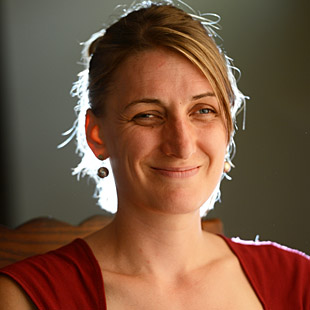
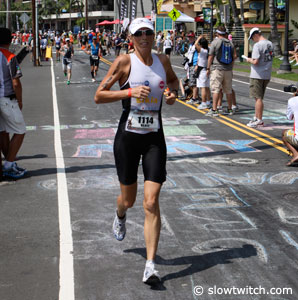

Start the discussion at forum.slowtwitch.com